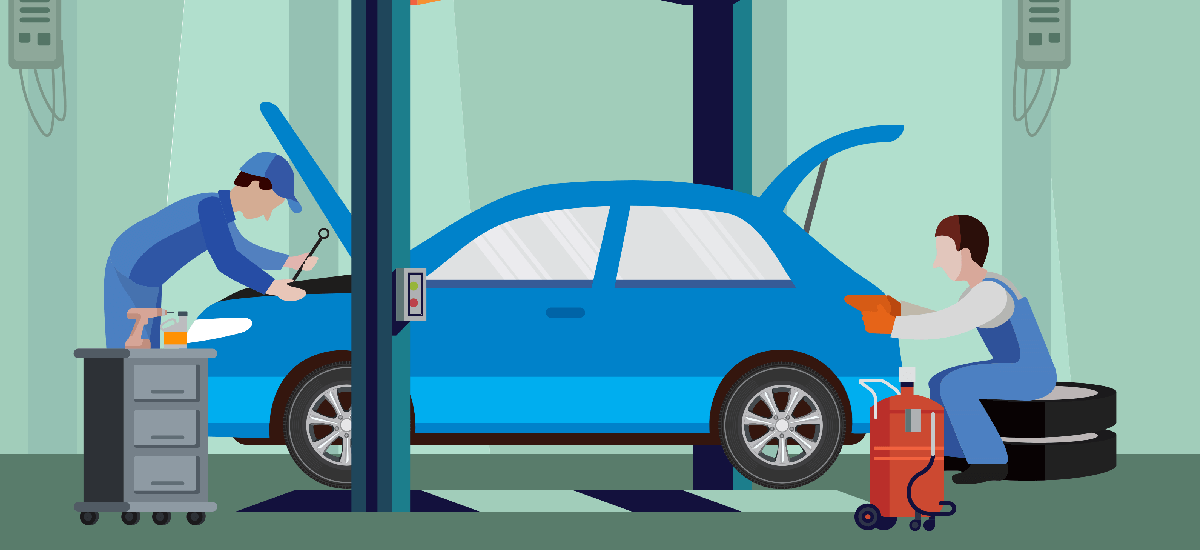Maintaining Your Vehicle: Essential Repair Tips
Keeping your vehicle in top shape is crucial for its longevity and performance. Regular maintenance can prevent costly repairs and ensure your car runs smoothly for years to come. Here are some essential repair tips to help you maintain your vehicle effectively.

Regular Oil Changes
One of the most critical aspects of vehicle maintenance is changing the oil regularly. Oil lubricates the engine’s moving parts, reducing friction and preventing overheating. Over time, oil can become dirty and less effective, leading to engine wear.
How Often Should You Change Your Oil?
Most manufacturers recommend changing the oil every 3,000 to 5,000 miles, but this can vary based on the type of oil used and driving conditions. Always check your owner’s manual for the recommended oil change intervals specific to your vehicle.
DIY Oil Change Tips
- Gather Supplies: Oil, oil filter, wrench, funnel, and a container for old oil.
- Warm Up the Engine: Warm oil drains more easily.
- Drain the Oil: Remove the drain plug and let the oil flow into the container.
- Replace the Oil Filter: Unscrew the old filter and screw in the new one.
- Add New Oil: Use a funnel to pour in the new oil, then check the oil level with the dipstick.
Checking and Replacing Fluids
Fluids play a vital role in your vehicle's operation, including coolant, transmission fluid, brake fluid, and power steering fluid. Regularly checking and topping off these fluids can prevent breakdowns and extend your car's life.
Coolant
Coolant helps regulate the engine's temperature. Low coolant levels can cause the engine to overheat, leading to severe damage.
Check the Coolant Level: Make sure the engine is cool, then check the coolant level in the reservoir. Add more coolant if necessary, and ensure it's a 50/50 mix of water and antifreeze.
Transmission Fluid
Transmission fluid lubricates and cools the transmission. Low or dirty transmission fluid can cause shifting problems and transmission damage.
Check the Fluid: With the engine running and the car in park, check the transmission fluid level using the dipstick. If it's low or dark in color, it’s time to add or replace the fluid.
Tire Maintenance
Proper tire maintenance ensures safety, improves fuel efficiency, and extends tire life. This includes checking tire pressure, rotating tires, and inspecting for wear and tear.
Checking Tire Pressure
Tires should be inflated to the manufacturer’s recommended pressure, which can be found in the owner’s manual or on the driver’s side doorjamb. Under-inflated tires can reduce fuel efficiency and cause uneven wear, while over-inflated tires can affect handling and increase the risk of a blowout.
Tire Rotation
Rotating your tires regularly helps ensure even wear and extends their lifespan. Most manufacturers recommend rotating tires every 6,000 to 8,000 miles.
Inspecting Tire Wear
Check your tires for any signs of wear, such as uneven tread wear, cuts, or punctures. Replace tires that are damaged or have worn tread.
Brake Maintenance
Your vehicle's brakes are crucial for safety. Regular brake maintenance includes checking the brake pads, rotors, and brake fluid.
Checking Brake Pads and Rotors
Worn brake pads and damaged rotors can compromise your vehicle’s braking ability. Listen for squeaking or grinding noises, which indicate worn pads. Visually inspect the rotors for grooves or cracks.
Replacing Brake Pads
- Lift the Car: Use a jack to lift the car and secure it on jack stands.
- Remove the Wheel: Loosen the lug nuts and remove the wheel.
- Remove the Caliper: Use a wrench to remove the caliper and access the brake pads.
- Replace the Pads: Remove the old pads and install new ones.
- Reassemble: Reattach the caliper, put the wheel back on, and lower the car.
Battery Maintenance
A healthy battery is essential for starting your vehicle and powering electrical systems. Regularly check the battery and its connections.
Inspecting the Battery
Look for corrosion on the battery terminals, which can prevent the battery from charging. Clean any corrosion with a mixture of baking soda and water.
Testing the Battery
Use a multimeter to check the battery's voltage. A fully charged battery should read around 12.6 volts. If the voltage is lower, it may be time to replace the battery.
Regular Inspections
In addition to these specific maintenance tasks, it’s important to regularly inspect your vehicle for any signs of trouble. This includes checking the lights, windshield wipers, and belts and hoses.
Lights and Wipers
Ensure all lights are functioning correctly, including headlights, brake lights, and turn signals. Replace any burnt-out bulbs. Check the windshield wipers for wear and replace them if they’re leaving streaks.
Belts and Hoses
Inspect belts and hoses for any signs of wear, such as cracks or fraying. Replace any that are damaged to prevent breakdowns.
Maintaining the Interior and Exterior
Keeping your vehicle clean inside and out not only improves its appearance but also helps maintain its value.
Cleaning the Interior
Regularly vacuum the carpets and seats, wipe down surfaces with a suitable cleaner, and condition leather seats. Clean the windows to ensure clear visibility.
Washing and Waxing the Exterior
Wash your car regularly to remove dirt and grime, which can damage the paint. Apply wax every few months to protect the paint and keep your car looking shiny.
Keeping a Maintenance Log
Keeping a detailed maintenance log helps track what services have been performed and when they need to be done again. This can be beneficial when selling the car, as it shows potential buyers that the vehicle has been well-maintained.
What to Log
- Date and mileage of each service
- Details of the work performed
- Parts replaced and fluids changed
Conclusion
Maintaining your vehicle is essential for ensuring its longevity and performance. Regular oil changes, fluid checks, tire maintenance, brake inspections, and battery care are crucial tasks that can prevent costly repairs and keep your car running smoothly. Additionally, regular inspections and keeping the interior and exterior clean contribute to the overall upkeep of your vehicle. By following these essential repair tips, you can enjoy a reliable and well-maintained vehicle for years to come.


You must be logged in to post a comment.